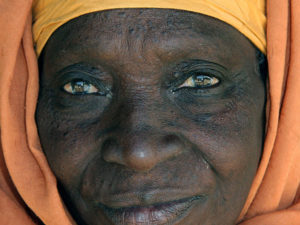Aid Effectiveness in Global Health: One Health Information System
Have you recently seen the medical records in the health facilities where your global health projects work? I imagine you may have seen something like the photo on the left from a health center in Nigeria: records on the floor, disorder, stored with other supplies, and maybe disintegrating because they got wet in the last rains. In short, you have seen a sea of unusable and lost medical information that prevents the health staff from making informed decisions. Unfortunately, this picture is far too common.
Or maybe you have seen records like the one in the right photo of health center in Haiti. In this health center, records were filed in alphabetical order, on shelves that are clean and protected from the rain. In short, this medical records room was a sea of useful accessible medical information to help improve the health of patients they serve and the community as a whole. Unfortunately, this picture is not the rule. But it is possible, even in cholera-stricken after-the-earthquake Haiti there is an effective health information system that is based on the medical information recorded in each patient’s file. By analyzing the information in the medical records and identifying the main health problems, health staff in this facility can measure how well they are doing in serving their patients, identify trends and plan and implement programs to help prevent and/or detect these main problems sooner and more efficiently.
Not having an effective health information system is like flying without instruments: not a good idea, even if you are an experienced pilot and have good visibility. Unfortunately, this still happens in too many health facilities in developing countries. Health providers are “flying without instruments.” They do not have access to the medical record of the patients they care for when they need it and cannot organize their health facility or manage effective programs because they just do not know what is going on.
Global health is not just about implementing projects funded by donors. We must ensure our projects are helping to build and develop the country’s health system. We must continue to help create an organized system that implements standard procedures to deliver quality healthcare. An improved health system must simultaneously address the health facilities (the health system hardware) as well as the country’s health programs (the health system software). To effectively and efficiently manage health facilities whether they are public or private, and implement the various programs, the country needs timely, accurate and relevant information.
Here is what to do:
- Mobilize all resources available and help change the picture we see in the health facilities where we work.
- Use your project to help build shelves, implement standard procedures, change the staff’s job descriptions to ensure they know how use the information and accompany them as they start to “fly with instruments” until the country can “fly solo” and can sustain the system on their own.
- Work with all stakeholders to not just focus on their projects and own institutional agendas, but to change the “picture of medical records” and ensure medical records play the important role they are intended to in at least 10% of the country’s health facilities every year for the next 10 years.
I invite you to sign up for the free RGH webinar entitled “Aid Effectiveness in Global Health: Getting Back to Basics in Global Health”.
Stay in touch with RGH through our weekly email updates, or our weekly video series.



